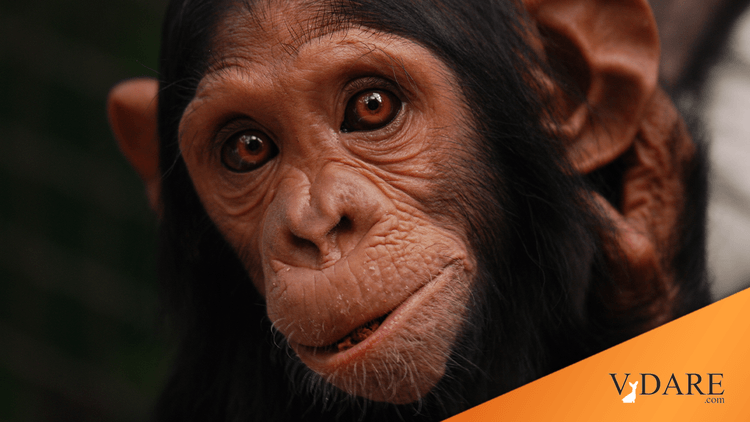
More "Deleted Scenes" from Cochran and Harpending
By Steve Sailer
01/13/2009
The website for the new book by Greg Cochran and Henry Harpending, The 10,000-Year Explosion, includes "deleted scenes" — chunks of text that were dropped for reasons of space. Some are digressions, such as Henry’s encounter with the charging cape buffalo, while others consist of fairly well-known background info, but are worth reading for the level of insight that you won’t find in other works. Here’s one subsection of a long essay, "Prelude," on the various traits that evolved at some point since humans broke off from apes. I'll just highlight the section on how well humans get along with members of their own sex. Personally, I have two fluffy bunnies living in the backyard, two neutered male rabbits who wouldn’t hurt a fly, but we have to keep them separated like the Israelis and Palestinians with a series of fences to keep them from ripping each other to shreds.
Groups of pair bonds — Some primates form durable mating male-female pairs, but the only ape to do so is the gibbon. Other arrangements like harems or troops are more common both among larger primates and among mammals in general.
In a harem there is one reproducing adult of one sex and more than one of the other sex. Gorillas and hamadryas baboons are mostly organized into one-male harems. African Cape Dogs live in one-female harems with a number of males that are related to each other. Troops contain adult reproductive individuals of both sexes, among whom there may be complex competitive games and strategies to achieve access to the other sex. Common baboons live in troops as do chimpanzees. The baboon troop, like troops of most mammals, is predominately a matrilineage, related females, while the males have entered the troop from another troop. Chimpanzee troops, on the other hand, are patrilineages, groups of related males, with females having come from elsewhere. Chimpanzee troops are ordinarily dispersed over a large territory while the more familiar usage of “troop” refers to a group that moves together.
Durable male-female pairs usually live away from other pairs, and when they do join larger groups, they are members of a flock, not involved or minimally involved in social interactions with others of the flock. Almost all the social interaction is between members of the pair. Animals in harems or troops, on the other hand, spend most of their time in same-sex interactions. Ordinarily these would be some variant of social competition for food among females and competition for females among males.
Humans, remarkably, have the ability to maintain durable pair bonds with reproductive exclusivity while living in larger social groups in which most of the day to day social interaction is with members of the same sex (Rodseth et al., 1991). Gibbons almost certainly could not do it: males are intolerant of the presence of other males and females of other females. Something special and now occurred in human evolution the led to our peculiar capacity to maintain pair bonds embedded in larger social groups.
